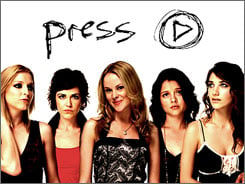
It's anyone's guess as to whether the acquisition by JumpTV of CyclingTV makes sense. That being said CyclingTV actually has paying customers - $40 a year for 18,000 customers - about $720,000 in annual revenues. JumpTV recently raised $100 million in an IPO and is using its stock and cash fairly wisely (the Cycling deal was 50/50 about). But the disclosure about CyclingTV actually brings up a very interesting point. Are customers willing to pay for content that they really really really want?
I think the answer is YES they are. And maybe JumpTV has the answer - aggregation. The ability to bring the long tail into one market. After all, with only 18,000 paying viewers, how can you pay for anything else other than a basic infrastructure? But with aggregation and shared resources this could become profitable. Paid content surely prevents getting around the guys that sign the checks since there are few advertisements if any. The one thing I'm worried about is piracy for these guys. It's not too difficult for a disgruntled customer to take a stream of Cycling TV and repost it on YouTube. Or is it? I'm not a subscriber but I'd be interested to see what their DRM is....
For the naysayers out there....remember in 1985 (if you were alive back then) when someone asked you to start paying for TV (yes it was and still is free for SOME content). Well guess what that trend took off. Pay Internet TV? Maybe not such a bad idea.



















